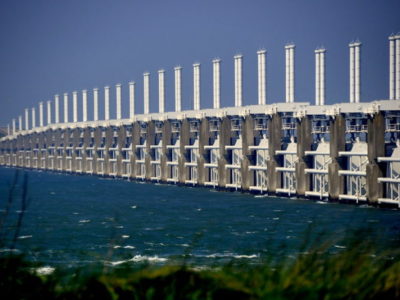Adaption strategies intended to build resilience for climate change are increasing. New research by the Pew Research Center finds that most citizens in countries across North America, Europe, and Asia-Pacific are willing to change how they work and live to fight the effects of climate change.
Further, many people are concerned about how societies have responded to the threat and question the ability of agreements, such as the Paris Agreement, to prevent a crisis.
The Paris Agreement is a legally binding international treaty on climate change. It was adopted by 196 Parties on December 12, 2015, and entered into force on November 4, 2016. The agreement got commitments from nations (nationally determined contributions or NDCs) for action that will limit global warming to below 2 degrees Celsius, preferably to 1.5, compared to pre-industrial levels.
The Paris Agreement calls for commitments to reduce (mitigate) greenhouse gases (GHG) and adapt to climate change. Because the effects of climate change are already occurring, adaptation strategies are necessary.
Companies that, for centuries, have made decisions based on a world of relative climate stability need to begin the work of building resilience to climate change. Adaptation means considering climate change when allocating capital, developing new products or services, managing their supply chain, and ensuring business continuity. Engagement with community and regional stakeholders will be essential as much of the adaption work relates to infrastructure.
Here are three interesting examples of how cities are adapting to rising sea levels:
Copenhagen: Lawmakers approved the construction of a one-square-mile barrier island in Copenhagen Harbor for $3.2 billion to protect the city from storm surges and rising sea levels. The island will be called Lynetteholm, will require an estimated 90 million tons of soil, and several environmental groups are protesting it.
Jakarta: The Indonesian capital city of Jakarta, home to over 10 million people, is one of the fastest sinking countries globally at a rate of 20 to 25 cm a year. In northern Jakarta, nearly 90% of the metropolitan region lies below sea level. As a result, more than 60% of the city’s residents, especially those in Kampungs – poor, informal, high-density settlements – are vulnerable to flooding. So, Jakarta developed a city-wide climate adaptation strategy that includes a sea wall and a plan to move 400,000 people living along the riverbanks and reservoirs. In addition, the government plans that starting in 2025, Indonesia will have a new capital city in the East Kalimantan province on the island of Borneo.
China: To address severe flooding and water shortages, such as the July 2021 flooding of Zhengzhou, Henan, that killed at least 31 people and displaced 1.24 million residents, China is piloting the concept of the sponge city. These cities are designed to be environmentally adaptive and environmentally friendly urban areas that absorb, store, infiltrate and purify rainwater. Key features include rooftops covered with plants, wetlands for rainwater storage, and permeable pavements that store excess runoff water and allow evaporation to moderate temperature.








